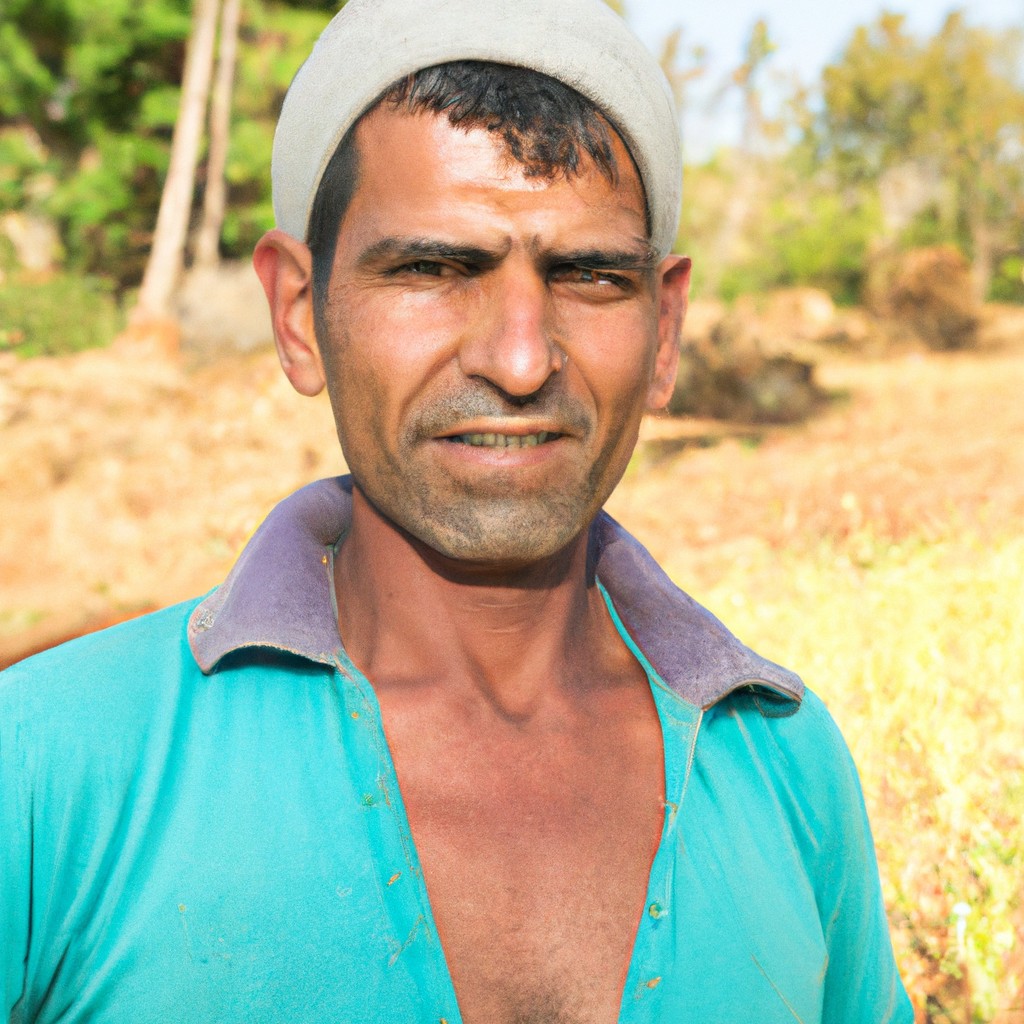Regenerative farming practices have the potential to sequester significant amounts of carbon, helping mitigate climate change impacts through agricultural innovation.
Regenerative farming, when implemented effectively, has the potential to sequester a significant amount of carbon. Studies suggest that these practices can sequester anywhere from 0.5 to 1.5 metric tons of carbon per acre annually. This means that a 100-acre farm could potentially sequester between 50 and 150 metric tons of carbon each year. This article dives deep into the science behind these numbers, the practices that make this possible, and the impact of regenerative farming on our environment. Stay tuned to understand the complete process and the potential of regenerative farming in mitigating climate change.
Key takeaways:
- Regenerative farming practices can sequester 0.5 to 1.5 metric tons of carbon per acre annually.
- A 100-acre farm could potentially sequester between 50 and 150 metric tons of carbon each year.
- Regenerative farming focuses on improving soil health, biodiversity, and carbon capture.
- Carbon sequestration in agriculture helps mitigate climate change impacts.
- Regenerative farming techniques include cover cropping, rotational grazing, and reduced soil disturbance.
Look Inside:
What Is Regenerative Farming?

Utilizing an approach that goes beyond sustainable farming, regenerative agriculture seeks to actively enhance the ecosystem by improving soil health, biodiversity, and carbon capture. It focuses on reintroducing organic matters and fostering the development of diverse arthropod and earthworm communities.
The goal is a net positive impact on the environment, fed by a self-sustaining cycle of abundant nutrients. By its very nature, regenerative farming fosters healthier, more resilient plants and animals—thus, promoting the profound viability of every ecosystem in which it’s incorporated.
Understanding Carbon Sequestration
Acting much like nature’s own version of carbon capture and storage, carbon sequestration refers to the long-term capture and storage of carbon dioxide from the atmosphere. This process predominantly occurs in our forests and soils.
While trees take in carbon dioxide during photosynthesis, some of the carbon remains stored within the tree and soil even as the tree decomposes or when the soils are disturbed.
In the realm of agriculture, carbon sequestration involves practices that absorb more carbon than the farm emits. The carbon captured by plants during photosynthesis is transferred to the soil through roots, leading to richer, more fertile grounds.
This increase of organic matter within the soil enhances its overall health and productivity, proving beneficial for crop growth. With the right farming practices, the soil’s capacity to retain carbon can significantly increase over time, substantially contributing to the fight against climate change.
The Role of Farming in Climate Change
Agriculture is responsible for about 24% of total greenhouse gas emissions, a significant contributor to climate change.
Prime agricultural practices like deforestation and the use of synthetic fertilizers release considerable amounts of carbon dioxide and nitrous oxide.
These gases, once in the atmosphere, trap heat and increase the planet’s temperature, leading to the effects of climate change.
Therefore, transitioning to sustainable methods is vital, making agriculture part of the solution rather than the problem.
How Does Regenerative Farming Sequester Carbon?
Including practices such as cover cropping, perennial planting, and rotational grazing, regenerative farming harnesses the power of plants to draw carbon dioxide from the atmosphere. As plants photosynthesize, they absorb carbon dioxide and convert it into sugars. These sugars, in turn, are exuded through the roots into the soil, where they feed a host of microorganisms.
Among these microorganisms are mycorrhizal fungi, which form a symbiotic relationship with plants. In exchange for the sugars from plants, these fungi provide the plants with nutrients. Importantly, these fungi also produce a sticky compound known as glomalin which helps to separate soil particles, creating spaces for water and air. Glomalin is also remarkably stable, capable of storing carbon in the soil for up to several decades, thus contributing to long-term carbon sequestration.
Moreover, regenerative farming avoids soil disturbance from tillage. By leaving the soil undisturbed, it prevents the release of stored carbon back into the atmosphere. Additionally, soil rich in organic matter can hold more water, which can lead to fertility benefits, improved crop health, and resilience against droughts.
Techniques Used in Regenerative Agriculture
Several techniques form the mainstay of regenerative agriculture, each playing a crucial role in increasing soil health and promoting carbon sequestration. A key method is cover cropping or the use of specific plants that cover and protect the soil to reduce erosion and enhance soil fertility, ultimately aiding in eliminating CO2 release into the air.
Crop rotation is another essential technique which entails alternating the types of crops grown in a specific area each season, preventing nutrient depletion, reducing pest pressures and enhancing soil biodiversity.
Managed grazing approaches are fundamental too, utilizing livestock to mimic the grazing patterns of wild herds that stomp and fertilize the soil, ultimately resulting in the diversification of the land’s plant species and the promotion of soil carbon sequestration.
Lastly, reduced soil disturbance is another critical factor. The less the soil is disturbed, the less carbon dioxide is being released, making no-till or minimum till practices essential.
Collectively, these practices ensure that more CO2 is drawn from the atmosphere and stored in the soil, helping mitigate the effects of climate change.
Putting Carbon Sequestration to Work in Soil
When it comes to putting carbon back into soil, regenerative agriculture includes multiple approaches. Crop rotation helps in diversifying the types of plants growing in a field across seasons, which aids in balancing nutrients and optimising soil health. By also preventing erosion, this practice promotes natural carbon fixation.
Cover cropping is another technique that provides protection against soil erosion and nutrient leaching, and contributes to optimal soil health. Sown during periods otherwise left fallow, these crops hold and enrich the soil.
Implementing no-till practices is equally important. Instead of disturbing soil and releasing carbon dioxide, no-till farming keeps carbon in the soil. By leaving organic matter on the soil surface, the activity of soil microorganisms that sequester carbon is enhanced.
Each of these methods contribute to the overall carbon sequestration potential of the soil, effectively decreasing the carbon dioxide in the atmosphere while boosting soil health, fertility and productivity.
Estimates of SOC Sequestration Potential
Various studies have shown different estimates of soil organic carbon (SOC) potential when using regenerative practices. Ranges typically fall between 0.5 to 1.5 metric tons per acre per year, depending on soil type, climate, and specific farming practices.
For instance, researchers suggest that converting croplands to agroforestry could potentially sequester about 9 tonnes of carbon per hectare per year, while managing pastures better could result in sequestration of up to 2 tonnes per hectare per year.
These estimates serve to provide a glimpse of the massive potential regenerative farming holds in harnessing carbon from the atmosphere and storing it in the soil — a smart way to curb greenhouse gas emissions and mitigate climate change.
However, these estimates are subject to optimization of practices and overcoming certain barriers, discussed in the following sections.
Modeling SOC Sequestration
Various geo-statistical models aid in predicting SOC (Soil Organic Carbon) levels within specific regions and the potential sequestration rate. These models, such as the Century Model or the RothC Model, consider multiple factors including soil type, temperature, and moisture levels, along with types of crops and farming practices.
The local data is then extrapolated to predict global carbon sequestration capabilities. However, to ensure accuracy, these models need to incorporate diverse farming systems, build upon extensive field trials, and continually refine algorithms to reflect changing climatic conditions.
Measuring Carbon Sequestration in Regenerative Farming
There are various methods to measure carbon sequestration in regenerative farming, each offering its unique advantages and limitations. Direct measurement, for instance, involves physical examination of soil. To evaluate the organic carbon content, samples are collected at various depths and sent to a lab for analysis.
Another popular technique is modeling, which uses mathematical and computational tools to predict carbon sequestration, based on factors such as soil type, climate, and farming practices.
Moreover, remote sensing technology is increasingly used in larger farms, thanks to its ability to analyze big areas efficiently. It uses satellite or aerial imagery to monitor changes in land use and vegetation, which can indicate changes in soil carbon levels.
Regardless of the method, frequent monitoring is essential as sequestration rates can change over time, influenced by factors such as weather and variations in farming practices. Accurate measurement is crucial to understand the real impact regenerative farming is having on carbon levels and optimize strategies accordingly.
Challenges in Carbon Sequestration Through Regenerative Farming
Despite the numerous benefits, realizing the full potential of carbon sequestration through regenerative farming involves overcoming certain challenges. One hurdle lies in the implementation of agronomic practices on a broader scale. Factors such as regional climate, soil type, and available resources can significantly affect the ability of farms to implement these practices effectively.
Additionally, there’s a lack of standardized measures to accurately quantify the amount of carbon sequestered in soils, which can lead to inconsistencies in reported results. Comprehensive and open data sharing is necessary to build robust, empirically-backed models and estimates of the potential of this practice.
Lastly, the current policy frameworks do not adequately incentivize farmers to adopt these practices. Without appropriate financial support and guidance, farmers may find the transition to regenerative methods challenging. Therefore, policy reform is crucial in enabling a more widespread adoption of regenerative farming for carbon sequestration.
Future of Regenerative Farming and Climate Change
Looking forward, there is a compelling need for wider adoption and further research into the efficacy of regenerative farming techniques in carbon sequestration. Early studies have pointed to the remarkable potential these techniques possess in capturing and storing carbon, however, more granular understanding is required.
Identifying which practices work best in specific regions and soil types will maximize results. Governments, scientific communities, and farmers should collaborate, promoting policy changes that incentivize such measures and driving further innovation.
Implementing regenerative farming practices can help counteract agriculture’s contribution to global carbon emissions, creating a more sustainable food system that supports environmental health. The role of these practices will undoubtedly be instrumental in our collective efforts to mitigate climate change effects.
FAQ
How much carbon is sequestered from regenerative agriculture?
Regenerative agriculture can sequester up to 3.6 tons of carbon per hectare each year, and organic agricultural practices have the potential to sequester up to 1,000 pounds of carbon per acre annually.
How much carbon can an acre of farmland sequester?
An acre of farmland can sequester an average of 0.77 metric tons of CO2e per year with no-till practices, and 0.76 metric tons per acre per year with the planting of cover crops.
What is the limit of carbon sequestration?
The limit of carbon sequestration in arable lands globally is likely around 0.1-0.2 Pg C yr−1, which is approximately 1.5% of current annual human-created CO2 emissions.
How does regenerative agriculture help sequester carbon?
Regenerative agriculture sequesters carbon by implementing methods like cover crops, residue mulching, composting, and crop rotation, and conservation tillage, all of which contribute to building soil health and storing carbon within the soil.
What methods are used in regenerative agriculture to optimize carbon sequestration?
Regenerative agriculture methods optimize carbon sequestration through practices such as cover cropping, no-till farming, agroforestry, rotational grazing, and organic amendments to the soil.
How does the rate of carbon sequestration vary among different regenerative farming practices?
The rate of carbon sequestration varies among different regenerative farming practices due to factors such as the specific initiatives implemented, which can range from cover cropping to agroforestry, with each technique offering different carbon storage potential.
How does climate change impact the abilities of regenerative agriculture to sequester carbon?
Climate change intensifies weather extremes, potentially disrupting the ability of regenerative agriculture to sequester carbon by impacting soil health and plant growth.




